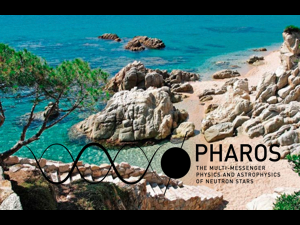Speaker
Prof.
Paola Leaci
(Sapienza University and INFN)
Description
Following the discoveries of transient gravitational-wave signals, more efforts and resources have been employed to detect continuous gravitational waves (CWs). These faint signals are emitted by asymmetric and quickly rotating neutron stars, both isolated and in binary systems, and are among the most interesting targets of the Advanced LIGO-Virgo detectors.
The search for this kind of signals is challenging due to their expected weakness, and can be very computationally expensive when the source parameters are not known or not well constrained.
The CW detection will allow us to characterize the emitting source for long times, better constraining its time-varying properties, and possibly test theories of gravity alternative to General Relativity. In addition, such a new kind of detection will give us insights to deeply study the physics of matter at supranuclear density and in presence of ultra-strong magnetic fields.
Although to date no direct CW detection can be claimed yet, we have been able to reach marvelous results and stringent upper limits on the CW amplitude strength.
I will present the methodologies used in CW searches and some remarkable results from the advanced LIGO-Virgo most recent observational runs.
Primary author
Prof.
Paola Leaci
(Sapienza University and INFN)

